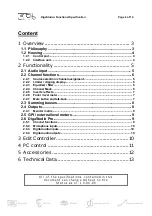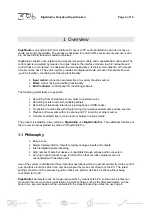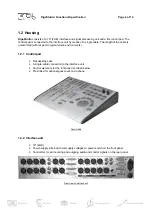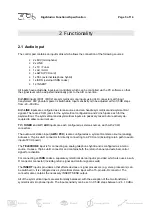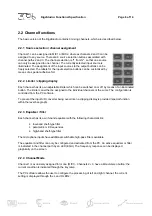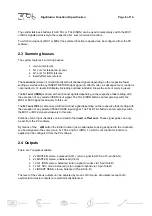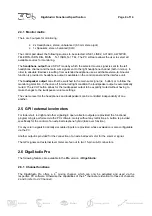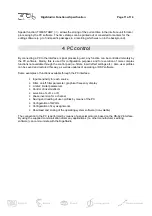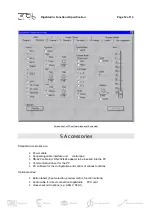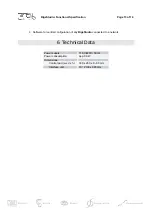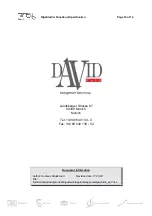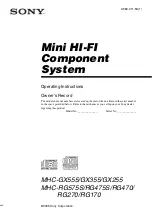
DigaStudio: Functional Specification
Page 3 of 14
1
Overview
DigaStudio
is an audio and control interface for users of PC audio workstations who do not have a
studio environment available. The product is designed for normal office environments and users who
are not specifically trained as audio technicians.
DigaStudio consists of an interface and signal-processing module and a separate flat control-pad. The
control-pad is connected by means of a single cable to the interface module, to which all audio and
control lines are connected. It is designed to avoid looking like a technician's workbench with masses
of cable on the desk. The entire system provides an integrated studio with user-friendly interface at
„your“ workstation, containing the following functionality:
•
Input matrix:
connection and selection of a variety of audio sources
•
Mixer:
typical mixing and editing functionality
•
Edit Controller:
control panel for the editing software
The following typical tasks are possible:
•
Recording from microphone or any other connected source
•
Recording of interviews with multiple partners
•
Recording of telephone interviews (via telephone or ISDN codec)
•
Production of audio clips with simple mixing of pre-produced elements and live sources
•
Playback of live events with microphone and PC recording or other sources
•
Transfer of edited clips to main studio or between various media
The product is available in two versions:
DigaStudio
und
DigaStudio Pro
. The additional functions of
the pro version are explained in section
1.1 Philosophy
•
Ease-of-use
•
Simple implementation, therefore mainly analogue inputs and outputs
•
Internal digital signal processing
•
High number of external devices connectable through various audio connectors
•
Very high input dynamic range (24-bit A/D) so that overdrive problems are not
encountered with unskilled users
Use of the system is divided into those important operations which are accessed directly via the control
pad, and those functions which can only be accessed by means of software on the PC. The latest
settings are stored in the processing unit so that it can perform its basic functions without being
connected to the PC.
DigaStudio
's parameters can be made user-specific by means of the PC, so that user-profiles can
move with the user to various workstations. Specific settings, such as the filter parameters, can be
stored on a per-user basis and then activated in the signal processing unit as the user logs-in.
Summary of Contents for DigaStudio
Page 1: ...DigaStudio DigAS...


